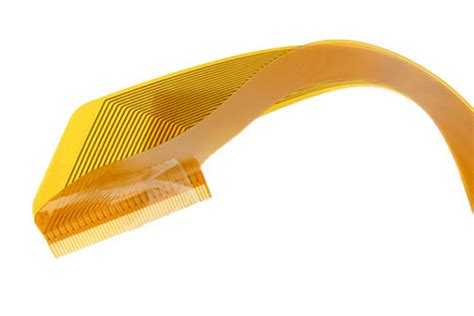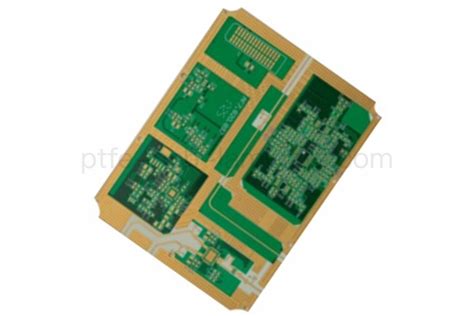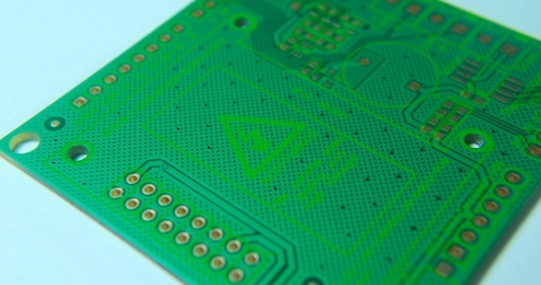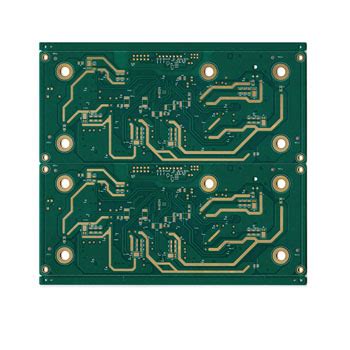Unleashing Innovation: The Future of All Flex Circuits
Key Takeaways
The future of all flex circuits is poised to revolutionize various sectors, making it essential to understand their transformative potential. PCB manufacturing plays a crucial role in this evolution, as it directly affects the quality and performance of flexible circuit designs. As you consider the pcb manufacturing cost, it’s important to weigh how investing in the latest technologies can lead to greater efficiency and reduced overall production costs. The emergence of specialized pcb manufacturing companies dedicated to creating advanced flex circuit solutions has enhanced the reliability and functionality of electronic devices, particularly in demanding applications such as medical devices and aerospace innovations. The ability to create smaller, lighter components without sacrificing performance is a significant trend driven by all flex circuits. This shift not only means that your designs can achieve greater miniaturization but also opens up new possibilities for innovative designs that cater to a variety of industries. Engaging with a robust pcb manufacturing business can ensure you’re at the forefront of this shift, leveraging advanced techniques that contribute positively to your product development cycle. As you explore these trends, it’s clear that understanding how all these elements come together will be essential for harnessing the full potential of all flex circuits in your projects.
Introduction to All Flex Circuits: An Overview of Current Technologies
All flex circuits are a game changer in the realm of printed circuit board (PCB) technology. As you delve into the world of pcb manufacturing, you will discover how these circuits offer unprecedented flexibility, enabling designs that adapt to various shapes and mounting surfaces. This adaptability not only enhances the performance of electronic devices but also contributes to a notable reduction in overall pcb manufacturing costs. When you consider how pcb manufacturing companies are increasingly adopting these innovative solutions, it’s evident that all flex circuits are at the forefront of modern technology. By streamlining designs and minimizing space requirements, these circuits support miniaturization trends across numerous industries. As your understanding deepens, you’ll see that tapping into advanced flex circuit solutions not only enhances reliability but also optimizes performance in challenging environments, reinforcing their critical role in the ongoing evolution of electronics. If you’re looking to stay ahead in the competitive landscape of the pcb manufacturing business, understanding and leveraging all flex circuits will be vital for driving innovation and improving product functionality. For further insights into the world of PCB design and production, consider exploring resources available at Andwin PCB.
The Role of All Flex Circuits in Medical Devices
In the medical device industry, all flex circuits play a pivotal role in enhancing healthcare technologies. These adaptable and lightweight circuits are integral to miniaturizing medical devices, thereby allowing for greater flexibility in design and functionality. By reducing size without compromising performance, they enable devices to be more portable and user-friendly. As a result, medical professionals can rely on these circuits for applications such as wearable health monitors, diagnostic equipment, and surgical instruments.
The integration of all flex circuits has led to significant advancements in reliability and performance, which are critical factors in the medical field. When choosing pcb manufacturing companies for your projects, it’s essential to consider those with expertise in advanced circuit design. The quality and precision achieved by skilled manufacturers often translate into devices that can withstand rigorous use while maintaining their integrity over time.
Moreover, understanding the pcb manufacturing cost is vital for developing cost-effective solutions without sacrificing quality. Investing wisely in pcb manufacturing business capabilities ensures that you get innovative designs that can meet the stringent requirements of the healthcare market.
“The future of medical devices relies heavily on innovation; embracing high-quality materials like all flex circuits will shape the next generation of healthcare technology.”
By harnessing the transformative potential of all flex circuits, you are not just adopting a trend but actively contributing to a revolution in how medical devices are developed. This not only benefits manufacturers but also ultimately enhances patient care through improved technology.
Enhancing Military Applications with Advanced Flex Circuit Designs
In the realm of military applications, the adoption of all flex circuits is revolutionizing how electronic systems are designed and deployed. These circuits offer remarkable attributes such as flexibility, light weight, and durability, making them ideal for use in various rigorous environments. The advanced composite materials utilized in pcb manufacturing allow for intricate designs that can fit seamlessly into space-constrained military equipment, enhancing overall functionality. You may be aware that the military often relies on robust electronic systems in communication, navigation, and targeting technologies; therefore, it becomes essential for pcb manufacturing companies to focus on these innovative flex circuit designs.
The use of flex circuits also significantly reduces the overall pcb manufacturing cost as they facilitate simpler assembly processes with fewer components needed. This not only leads to cost savings but also enhances reliability by minimizing potential failure points. By encapsulating vital electronic components within flexible substrates, you’ll find that these circuits are more resistant to mechanical stress—an essential factor for devices operating under challenging conditions.
To illustrate the impact further, consider a comparative table showcasing traditional PCBs vs. advanced flex circuits in military applications:
| Feature | Traditional PCBs | Advanced Flex Circuits |
|---|---|---|
| Flexibility | Limited | High |
| Weight | Heavy | Light |
| Durability | Moderate | High |
| Assembly Complexity | Higher | Lower |
| Cost Efficiency | Moderate | Increased |
As military technology continues to evolve, the integration of all flex circuits promises to enhance performance while addressing specific requirements within defense systems. Adopting these advanced designs helps you stay ahead in a competitive landscape where reliability, efficiency, and innovation are paramount.
The Impact of All Flex Circuits on Aerospace Innovations
In the realm of aerospace innovations, all flex circuits are proving to be a game changer. As you explore new frontiers in aviation technology, these circuits facilitate enhanced functionality while addressing the challenges associated with weight reduction, space limitation, and durability. By leveraging pcb manufacturing techniques that allow for flexible designs, you can achieve greater efficiency in various aerospace applications. Reduced pcb manufacturing cost is another critical factor; as these circuits streamline assemblies and lower material needs, they contribute to overall savings without compromising performance. Moreover, partnering with reputable pcb manufacturing companies ensures you have access to cutting-edge technologies and expertise for producing high-quality flex circuits that meet stringent aerospace standards. As advancements in design and materials continue to unfold, the potential for all flex circuits to revolutionize the aerospace sector expands significantly. Whether it’s for improving avionics systems or enhancing satellite functionality, your engagement with innovative pcb manufacturing business practices will be essential in harnessing their full potential. With a focus on reliability and performance, the impact of these circuits is redefining what’s possible within the demanding environments of aerospace engineering.
Miniaturization Trends: How All Flex Circuits Are Changing Electronics Packaging
As technology advances, the demand for smaller, more efficient electronic devices continues to grow. This trend has led to the increased adoption of all flex circuits, which play a pivotal role in redefining electronics packaging. These circuits, known for their flexibility and lightweight nature, allow engineers to explore innovative designs that optimize space without sacrificing performance. As you navigate the landscape of pcb manufacturing, you will find that these circuits are increasingly becoming a standard in various applications, thanks to their ability to facilitate miniaturization.
With pcb manufacturing companies focusing on integrating flex technology into their offerings, the cost associated with these advanced circuits has become more competitive. This shift is significant for the pcb manufacturing business, as it not only enhances product functionality but also ensures that devices remain reliable under various operating conditions. All flex circuits are driving breakthroughs in compact designs while allowing for complex and intricate layouts that traditional rigid circuits cannot accommodate. As a result, industries ranging from consumer electronics to medical devices benefit greatly from these advancements.
In summary, the trend towards miniaturization is undoubtedly reshaping electronics packaging, with all flex circuits at the forefront of this transformation. As you consider your options in pcb manufacturing, understanding the advantages of these innovative solutions will better position you to meet evolving market demands while enhancing performance and reliability across your projects.
Reliability and Performance: Key Benefits of All Flex Circuit Solutions
When considering all flex circuits, one of the standout advantages is their unmatched reliability and performance in a variety of applications. This is particularly pronounced in sectors such as medical, aerospace, and military, where the consequences of failure can be significant. You can expect that these circuits often exhibit superior resistance to environmental challenges, which enhances their effectiveness under extreme conditions. This robustness translates into lower long-term costs for your pcb manufacturing efforts; a fact that is particularly beneficial when evaluating pcb manufacturing companies that prioritize innovation in their designs.
Furthermore, the flexibility inherent in all flex circuits allows for more efficient utilization of space within electronic devices, making them essential for achieving miniaturization goals. You’ll find that the integration of these circuits not only improves mechanical reliability but also optimizes electrical performance—factors critical to maintaining functionality across diverse industries. When calculating your pcb manufacturing cost, consider how investing in advanced technologies like all flex circuits can ultimately lead to substantial savings by minimizing the risk of product failure and enhancing overall operational efficiency.
Adopting all flex circuit solutions enables your pcb manufacturing business to remain competitive by offering products that meet high standards for durability and efficiency. By keeping these elements at the forefront of your strategy, you’re positioning yourself ahead in an ever-evolving technological landscape. Ultimately, embracing this innovation will be pivotal as you look to enhance both performance and reliability across your supply chain.
Future Trends: What’s Next for All Flex Circuits in Various Industries
As you explore the future trends for all flex circuits, it is crucial to understand how their continued evolution is poised to affect a range of industries. The ongoing advancements in pcb manufacturing technologies are enabling pcb manufacturing companies to create more sophisticated and efficient designs, catering to the growing demand for compact and flexible electronics. This trend is particularly relevant in the context of the pcb manufacturing cost, where innovative methods promise to enhance affordability without sacrificing quality. Emerging sectors, such as wearable technology and smart devices, are increasingly reliant on these advancements, pushing the boundaries of what devices can do while maintaining a sleek form factor. The integration of all flex circuits will likely facilitate improved functionality, increased reliability, and greater miniaturization across various applications. In particular, industries focused on automation, healthcare, and consumer electronics are expected to see significant benefits as they adopt these innovative solutions in their products. As you consider these developments, it’s clear that the pcb manufacturing business landscape will continue to evolve rapidly, driven by increasing competition and a pressing need for innovation that can address contemporary technological challenges.
Conclusion: Embracing the Potential of All Flex Circuits for Innovation
As you explore the promising landscape of all flex circuits, it becomes clear that their adoption can significantly influence the trajectory of innovation across various sectors. By integrating flex circuit designs, you can enhance device (functionality), leading to improved outcomes in fields such as medical devices, military applications, and aerospace technologies. The trend towards miniaturization, propelled in part by advancements in pcb manufacturing, has allowed engineers and designers to create more compact and efficient devices. As you evaluate the benefits, consider how partnering with reputable pcb manufacturing companies can affect overall production efficiency and reduce costs associated with project implementation. The longstanding need for enhanced reliability in consumer electronics is met effectively through these innovative circuits, making them indispensable as companies strive to create products that not only meet current standards but also pave the way for future technological advancements. A keen understanding of your options within the pcb manufacturing business will allow you to embrace solutions that can maintain high performance while facilitating groundbreaking innovations across diverse industries.
Conclusion: Embracing the Potential of All Flex Circuits for Innovation
In the rapidly evolving landscape of technology, embracing all flex circuits is not just a trend; it’s a necessary step towards future-proof innovations. As you explore the possibilities of pcb manufacturing and engage with leading pcb manufacturing companies, you will notice an increasing emphasis on adopting flexible solutions that meet the demands of modern applications. The benefits, such as reduced weight, enhanced reliability, and superior performance, are driving this shift. Investing in pcb manufacturing cost efficiency while leveraging advanced designs can lead to significant improvements in product functionality across various fields. Whether it’s in medical devices, military applications, or aerospace innovations, the role you play in harnessing the potential of all flex circuits can position your venture at the forefront of innovation. By fully integrating these flexible technologies into your pcb manufacturing business, you’re not just enhancing your products; you’re paving the way for a transformative future that prioritizes both performance and miniaturization. As industries evolve, so too does your potential to redefine what’s possible through thoughtful innovation and strategic adaptability with all flex circuits.
FAQs
What are flex circuits?
Flex circuits are flexible printed circuit boards that enable electronic components to be interconnected in a compact and bendable form factor, offering a unique solution for space-constrained applications.
How do all flex circuits improve reliability?
Thanks to their durable materials and design, all flex circuits are less prone to damage from stress and fatigue compared to traditional rigid circuits, enhancing overall reliability in various applications.
What applications benefit most from all flex circuits?
Industries such as medical devices, military, aerospace, and consumer electronics benefit extensively from all flex circuits, thanks to their ability to support complex designs while maintaining optimal performance.
How is the cost of pcb manufacturing** determined?
The pcb manufacturing cost can vary based on factors such as materials used, circuit complexity, quantity produced, and special requirements such as surface finishes or custom designs.
Which companies should I consider for pcb manufacturing?
When looking for reliable pcb manufacturing companies, prioritize those with experience in your specific application area and a track record of delivering high-quality service at competitive prices.
Can companies decrease their pcb manufacturing costs?
Yes, businesses can lower their pcb manufacturing costs by optimizing designs for manufacturability, increasing order quantities, and building long-term relationships with suppliers that offer better pricing structures.







